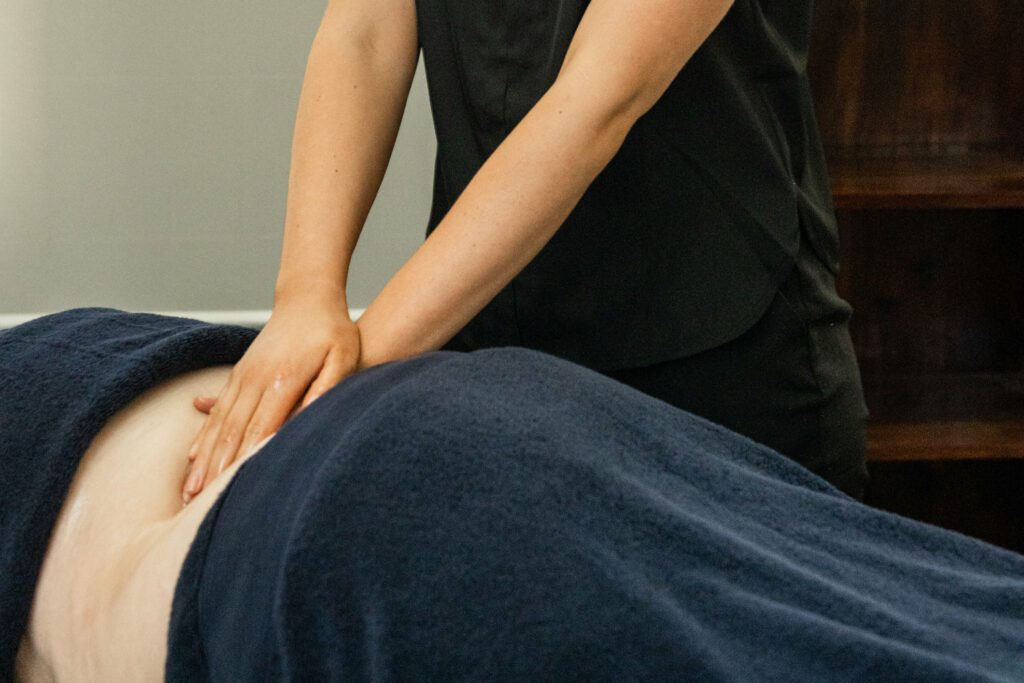Myofascial Pain Sydrome
What is Myofascial Pain Sydrome?
Myofascial Pain Syndrome (MPS) is a painful musculoskeletal condition, a common cause of musculoskeletal pain. MPS is characterized by the development of myofascial trigger points (TrPs) that are locally tender when active, and refers pain through specific patterns to other areas of the body. A trigger point or sensitively painful area in the muscle or its junction and fascia (hence, myofascial pain) develops due to a number of causes. Trigger points are usually associated with a taut band and a ropey thickening of the muscle tissue. Typically, a trigger point when pressed upon, will cause the pain to be felt elsewhere. This is what is considered “referred pain”.
The following factors can cause trigger points:
- Sudden trauma to musculoskeletal tissues (muscles, ligaments, tendons, and bursae)
- Injury to inter-vertebral discs
- Generalize fatigue (fibromyalgia is a perpetuating factor of MPS, perhaps chronic fatigue syndrome may produce trigger points as well)
- Repetitive motions, excessive exercise, and muscle strain due to overactivity
- Systemic conditions (eg: gall bladder inflammation, heart attack, appendicitis, and stomach irritation)
- Lack of activity (eg: a broken arm in a sling)
- Nutritional deficiencies
- Hormonal changes (eg: trigger point development during PMS or menopause)
- Nervous tension or stress
- Chilling of areas of the body (eg: sitting under an air conditioning duct and sleeping in front of an air conditioner).
The fascia is a tough connective tissue which spreads throughout the body in a three dimensional web from head to foot without interruption. The fascia surrounds every muscle, bone, nerve, blood vessel, and organ of the body, all the way down to the cellular level. Therefore, malfunction of the fascial system due to trauma, posture, or inflammation can create a binding down of the fascia, resulting in abnormal pressure on nerves, muscles, bones, and organs.
This can create pain or malfunction throughout the body, sometimes with bizarre side effects and seemingly unrelated symptoms. It is thought that an extremely high percentage of people suffering with pain and/or lack of motion may be having myofascial problems; but most go undiagnosed, as the importance of fascia is just being recognized only recently
Many of the standard tests, such as x-rays, myelograms, CT scans, eletromyography, and the likes do not show the fascia. (John Barnes, P.T., 1992)
Occasionally, trigger points produce autonomic nervous system changes such as flushing of the skin, hypersensitivity of areas of the skin, sweating in some areas, or even “goose bumps.” The trigger points cause localized pain, although TrPs can involve the whole body.
In three studies, the prevalence of myofascial TrPs among patients complaining of pain anywhere in the body ranged from 30% to 93%; (among patients with chronic craniofacial pain, 55%; and for lumbogluteal pain, 21%.)
The characteristic electrical activity of myofascial TrPs most likely originates at dysfunctional end plates of extrafusal muscle fibres. This dysfunction appears to play a key role in the pathophysiology of TrPs. (Simons 1996)
Subjective shortness of breath can be part of the myofascial pain syndrome of the levator scapulae muscle. In one study, 75 patients who reported neck painand shortness of breath were examined. Trigger points were located and inactivated with acupuncture needles (dry needling). 68 of the 75 patients in the study reported that their shortness of breath and soreness were abolished immediately after inactivation of the TrPs. The other 7 patients needed a second trial of inactivation. Eliminating the trigger points eliminated the symptoms. (Journal of Muskuloskeletal Pain, 1996)
Like fibromyalgia, myofascial pain syndrome is an often misunderstood condition. Even today, some doctors either don’t believe that MPS exists or they don’t understand its symptoms and treatment.
Treatment of MPS can only begin after an accurate diagnosis is accomplished. Methods for managing this painful condition:
- Trigger point therapy (myofascial release therapy, myotherapy, massotherapy, and medical massage therapy)
- Spray and stretch technique (stretching of the muscles involved with a vapocoolant spray – a coolant is sprayed on the trigger point to lessen the pain, and then the muscle is stretched.)
- Trigger point injections (local anaesthetic, such as lidocaine, injected directly into the trigger points)
- Dry needling (the use of a needle without injecting anything)
- Osteopathic manipulation treatment
- Craniosacral therapy
- Physical therapy (hands-on)
- Exercise
- Improvement of nutrition
- Changing sleeping habits
- Elimination of stress, biofeedback, and counselling for depression that may result from this painful condition.
Note: TrP injections and dry needling mechanically disrupt the trigger point. The use of lidocaine is no more effective, but it reduces the soreness after injection. For MPS, there is no role for injected steroids.
An active trigger point when treated well or with rest will become latent (quiet or not causing active symptoms). It can often resurface after trauma after acute overload or fatigue, or even sudden exposure to cold. Conversely, new trigger points may arise elsewhere, or at least become more significant as others become latent.
For MPS, you should see a doctor knowledgeable in chronic pain such as a osteopathic physical medicine doctor or a osteopathic neurologist. The diagnosis is made by the history and physical exam. There is no lab test nor imaging studies to confirm the diagnosis. A history of acute trauma or chronic overuse should be looked for. On exam, there is typically restricted motion with pain of the affected muscle. Other medical problems need to be ruled out with imaging or other studies. For instance, if a patient presents himself with back pain, disc pain, and other problems need to be ruled out.
Altered pain perception accompanies MPS. A Danish study indicates that people with chronic myofascial pain perceive and transmit pain differently than people without the syndrome. As many as 72 percent of people with fibromyalgia may have trigger points associated with myofascial pain.


